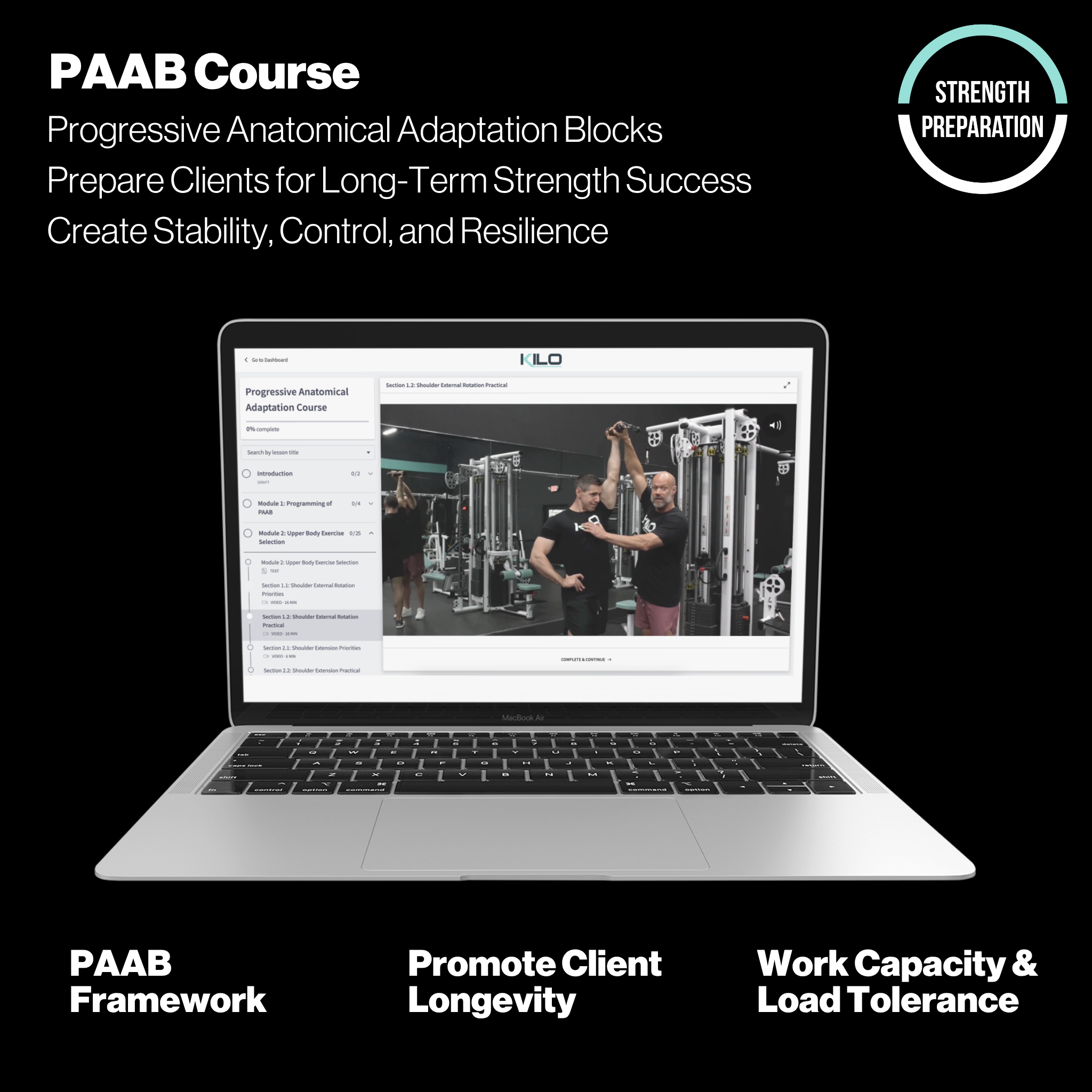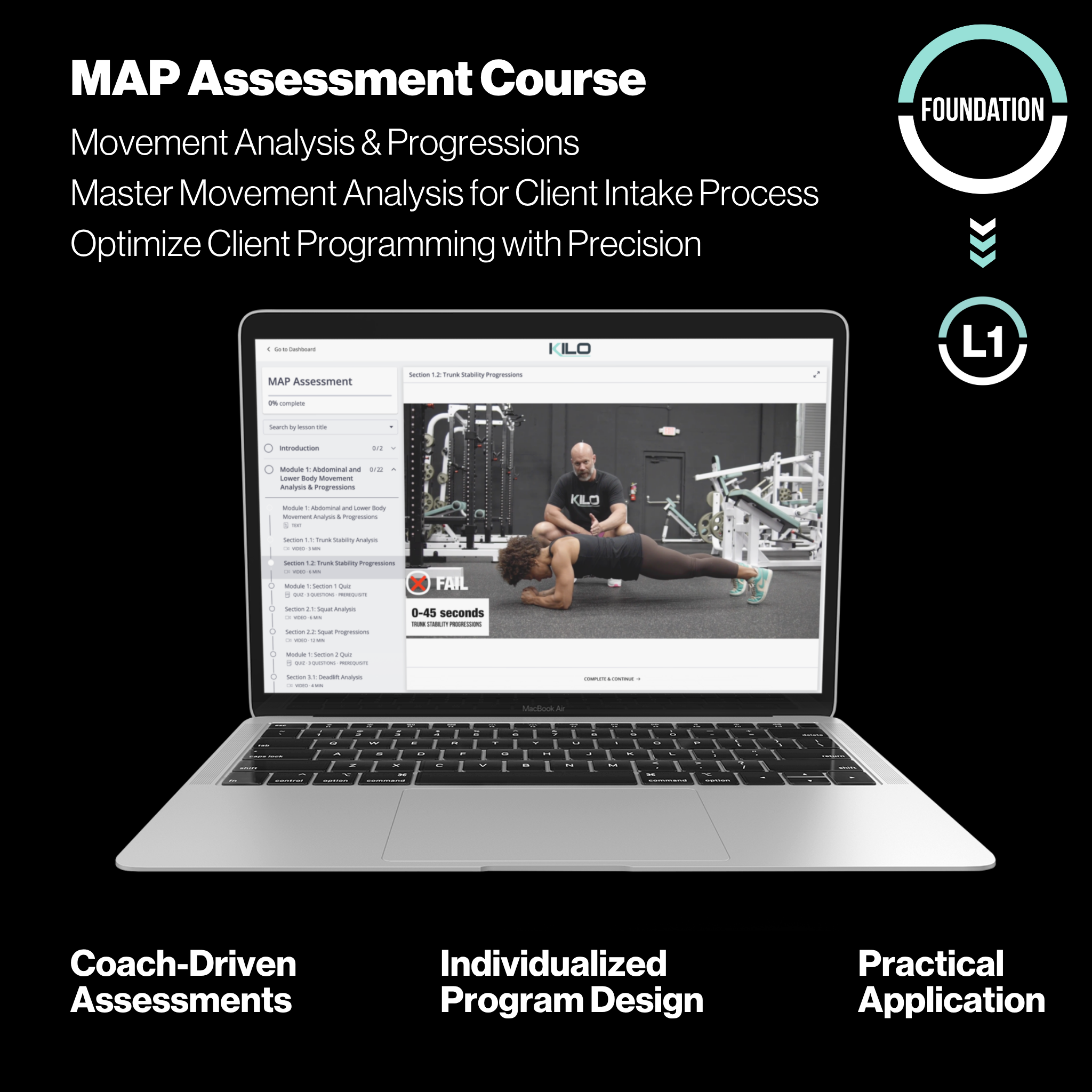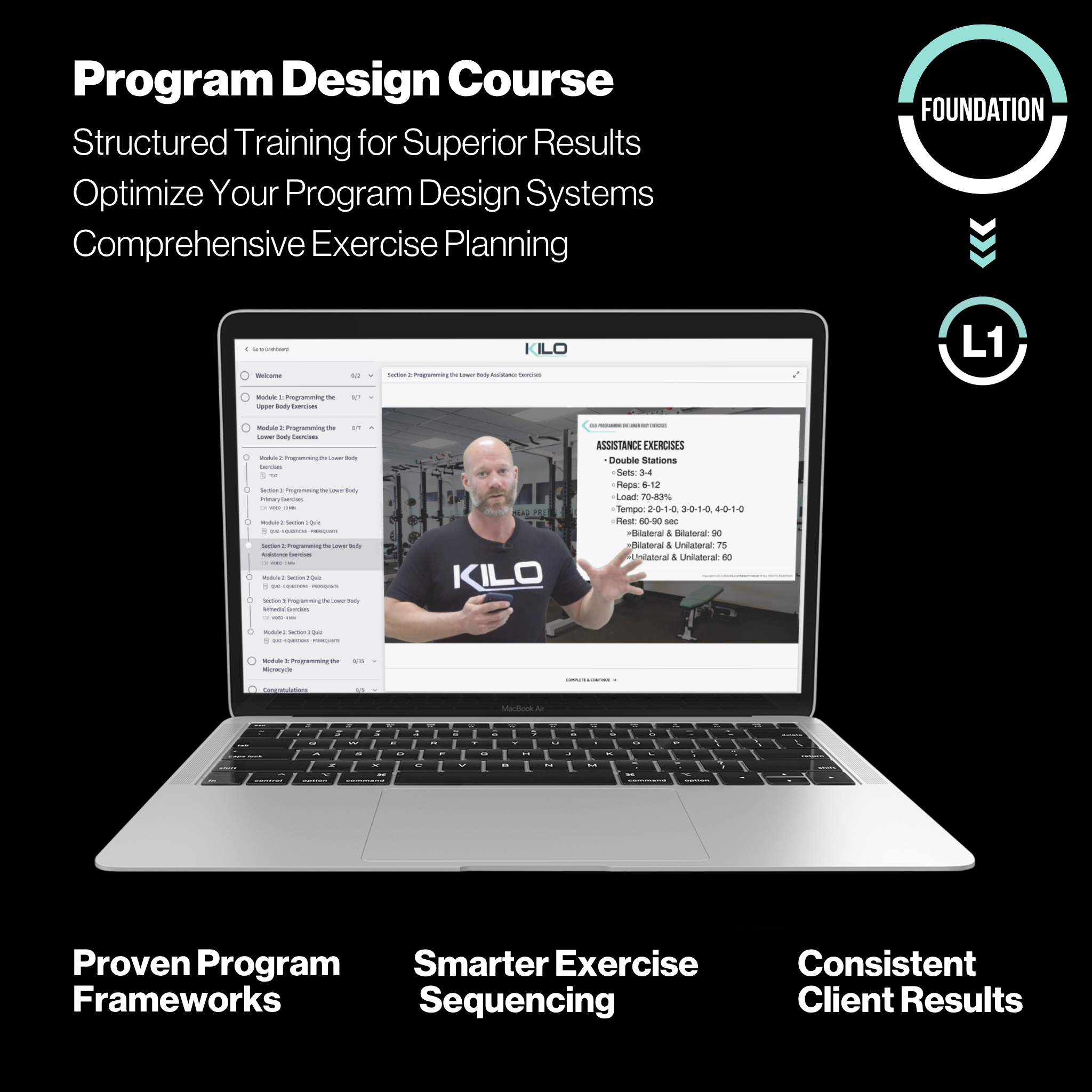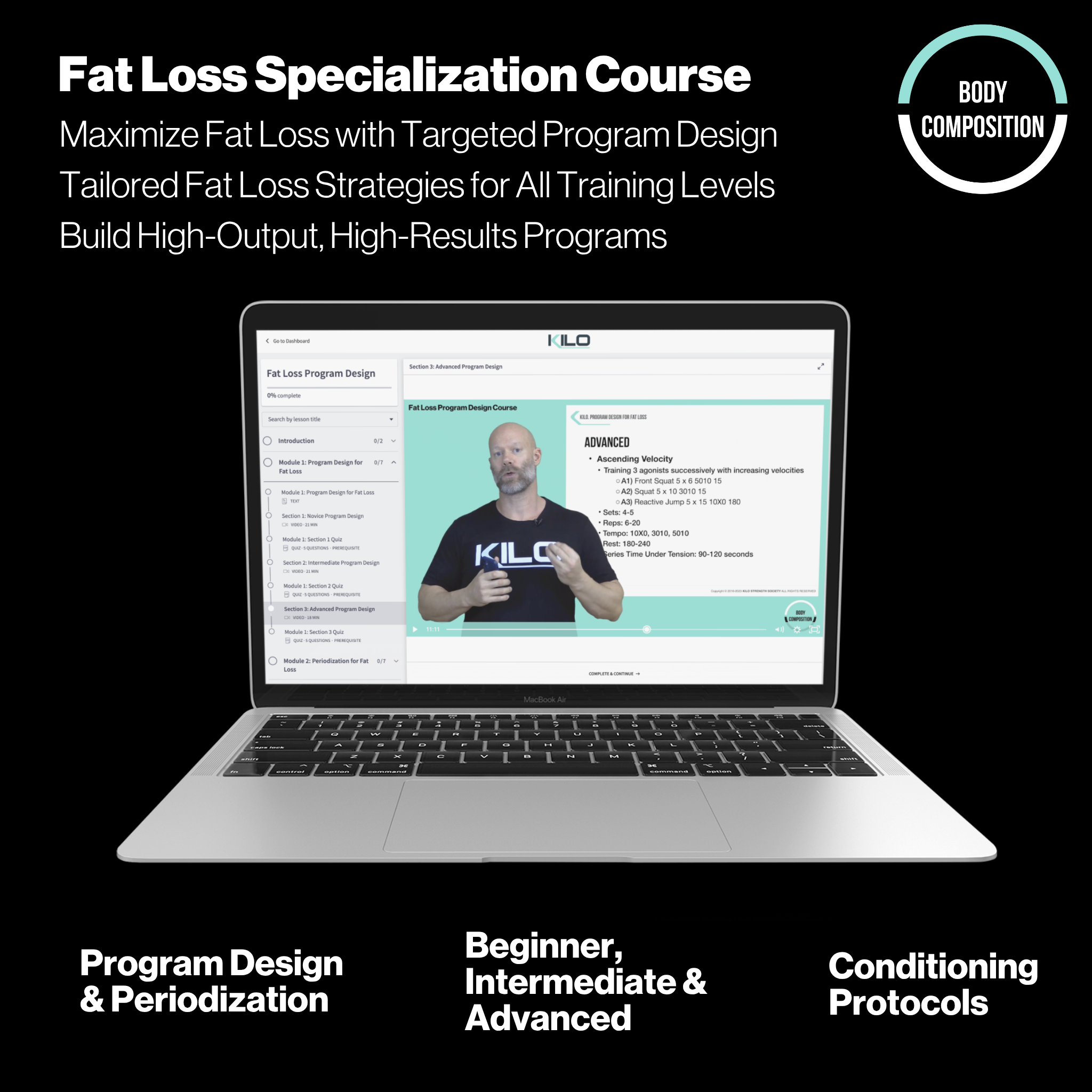When it comes to lower body training, most programs focus on lifting heavy and leave it at that. But without the right structure, even the heaviest squats and deadlifts won’t take you far. At KILO, we believe real strength starts with a system, not just a barbell.
This article gives you a behind-the-scenes look at how we build lower body sessions for strength, balance, and longevity. It’s the same structure we teach in our Program Design Course, and the same system we use with our clients and athletes every day.
Structure Creates Strength
Our lower body sessions are designed with intention. Just like our upper body sessions, they follow a clear progression:
-
A-Series: Primary Strength Work
-
B-Series: Assistance and Hypertrophy
-
C-Series: Isolation and Prehab
Each part of the session plays a specific role, and the sequencing ensures that fatigue is managed and effort is directed where it matters most. By front-loading high-demand compound lifts and progressing toward more isolated work, we protect technique, preserve output quality, and ensure each movement builds on the last.
The A-Series: Heavy Lifting with Purpose
The A-series starts the session with a heavy compound movement. This is where we build maximum strength. Our primary lifts include:
-
Squat
-
Front Squat
-
Deadlift
Each lift is performed with a controlled tempo (typically 4-0-X-0 or 4-1-X-0 for deadlift), lower rep ranges (1-6 for front squat and deadlift and up to 12 for squats), and long rest intervals (180-240 seconds). This gives athletes the best chance to generate force and maintain technical precision under load.
We use single-station setups for these exercises to reinforce focus and performance, meaning the athlete completes all sets of one exercise at a single station without supersetting or rotating between movements. This minimizes distractions and maximizes intensity on the main lift. When done correctly, the A-series sets the tone for the rest of the session.
The B-Series: Smart Assistance Work
In the B-series, we shift focus to movements that build balance, hypertrophy, and functional strength. These exercises support the primary lift and target key muscle groups that often need more attention.
Typical examples include:
-
Split Squat or Lunge
-
Rack Deadlift, Romanian Deadlift or other specialty deadlift variations
-
Cyclist Squat, Pin Squat, or other squat variants
-
Knee Flexion variations
These lifts are performed for moderate reps (6-12), rest intervals typically ranging between 60-90 seconds or 150-180 seconds depending on the lift, and a controlled tempo (3-0-1-0). They allow us to improve symmetry between sides and target muscles through different ranges of motion.
Depending on the training phase, we may emphasize different variations, but the goal is always the same: build resilience where the main lift can’t.
The C-Series: Addressing Weak Links
To round out the session, we mostly focus on isolation exercises that promote muscle balance and joint health. These are typically done in pairs and target areas that contribute to strength development but don’t get fully challenged by compound lifts.
Common pairings include:
-
Knee Extension paired with Hip Extension
-
Calves paired with Abdominals
We use higher reps (10-20), lighter weights, and short rest periods (30-60 seconds) to improve work capacity and match the demands of the C-series. These movements help us fine-tune muscular weakness and extend training health and longevity.
Specialty Progressions: Building Beyond the Basics
To develop well-rounded strength, we incorporate specialty squat and deadlift variations across the macrocycle. These movements target different ranges of motion, joint angles, or loading patterns to correct weaknesses and push further adaptation.
Examples include:
-
Cyclist Squat for increased quad demand via upright posture and long range of motion, Pin Squat to develop strength out of the bottom or specific sticking points, and Single-Leg Squat as an unloading exercise to favor recovery.
-
Trap Bar Deadlift for a more joint-friendly hinge pattern, Deficit Deadlift to improve strength off the floor, and Rack Pulls to build top-end lockout strength and overload the posterior chain.
We rotate these in as either B-series assistance or replacements for A-series primary lifts depending on training age, injury history, or phase goals. The key is keeping the movement patterns fresh without losing specificity.
Why This Matters
Randomized lower body training leads to plateaus, poor muscular balance and increased injury risks. Without consistent exercise selection and progression strategies, lifters may overload certain joints, neglect key muscles, and lose the opportunity to build transferable strength. You need a system that trains the right muscles at the right time with the right intent. At KILO, we build lower body sessions that are challenging, smart, and sustainable.
The strategies shared in this article are a glimpse into the full process we teach in our Program Design Course. If you’re ready to take your training or coaching to the next level, it’s time to learn the system.
Join the KILO Program Design Course and discover how to program every lower body session with clarity, progression, and purpose.
Train hard. Train smart. Train KILO.








Share:
General Physical Preparation for Soccer Players: What Muscle Groups Should You Prioritize?
Neural Adaptations to Strength Training: Unlocking the Power of the Nervous System